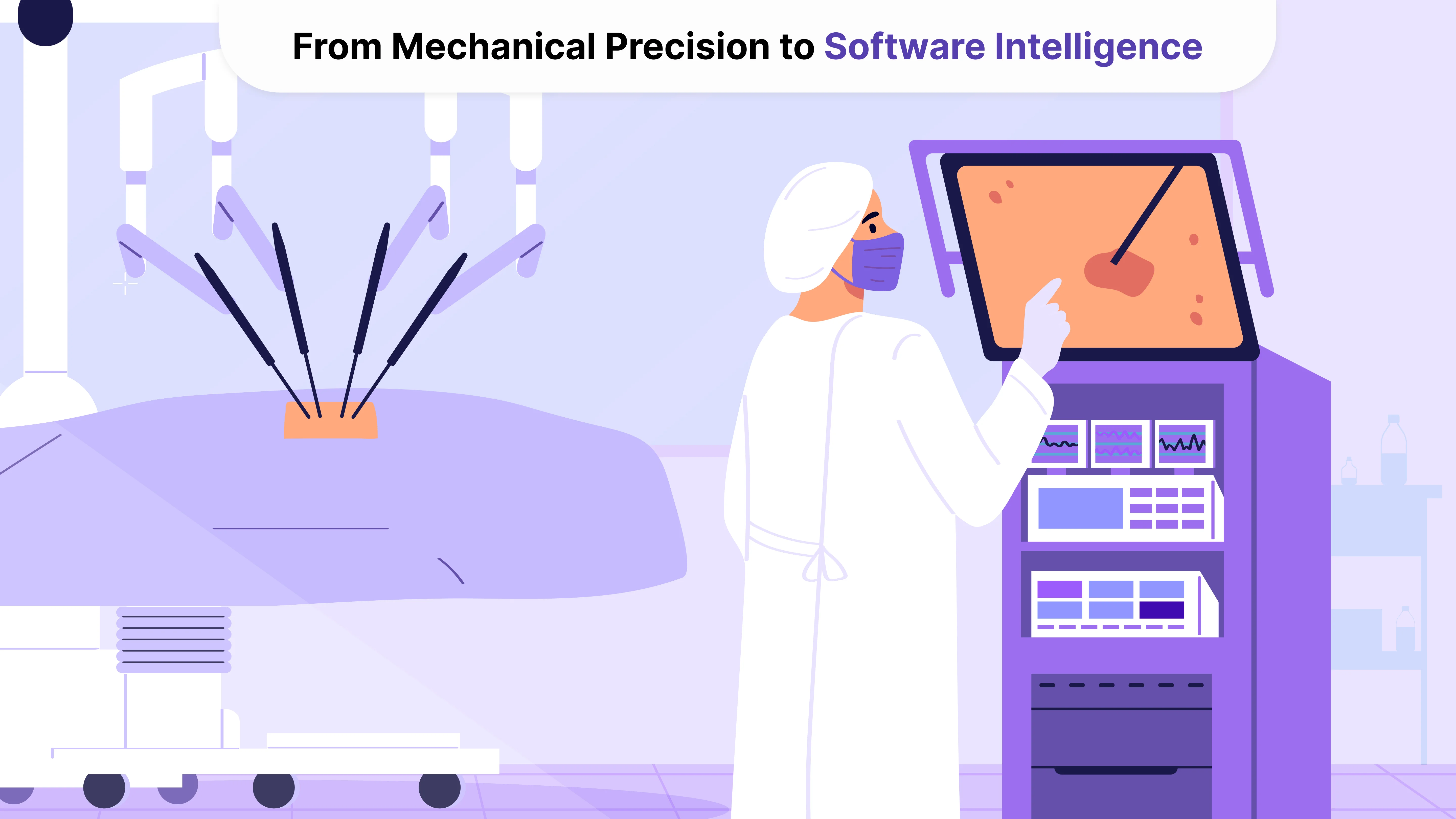

From Scalpel to Software: The Evolution of Robotic Surgery in the HealthTech Era
When the Scalpel Met Software — A Quiet Revolution in the OR
For centuries, the practice of surgery was shaped by the physical limits of the human hand. Mastery meant steady fingers, sharp instincts, and the nerve to operate under pressure. But behind the closed doors of today’s operating rooms, a new kind of precision is taking shape — one built not on muscle memory, but on microprocessors, code, and sensors.
We are witnessing a radical shift in surgical care: from tools forged in steel to systems trained on data. What was once the exclusive domain of scalpels and sutures is now being redefined by robotic arms, AI-driven planning, and cloud-connected operating rooms. Surgeons are no longer just operating on patients — they’re collaborating with machines that can see more, move faster, and learn from every case.
This is not science fiction. It’s real, it’s already here, and it’s quietly transforming healthcare as we know it.
From the first robotic-assisted surgeries to fully AI-guided interventions, robotic surgery is evolving at the crossroads of medicine and machine intelligence, raising new possibilities, new questions, and a new standard for what surgery can be in the HealthTech era.
From Mechanical Precision to Software Intelligence

Robotic surgery emerged not as a replacement for human hands but as their most advanced extension. The launch of the da Vinci Surgical System in 2000 marked a turning point: suddenly, surgeons could operate through tiny incisions using a console and a 3D camera, translating their gestures into the delicate movements of robotic instruments inside the body. At the time, many dismissed it as expensive theatre. But the outcomes — shorter recovery times, less blood loss, and fewer complications — spoke for themselves. Over time, robotic systems moved from rare prestige items to essential tools in operating rooms around the world.
What makes this shift so profound is not just the machinery, but the intelligence behind it. While early systems were mechanical marvels, today’s surgical robots are deeply integrated with software that learns, adapts, and sometimes even advises. AI-enhanced platforms can now identify organs and blood vessels in real time, suggest incision points based on patient data, and even correct the trajectory of a surgeon’s movement mid-procedure. The boundaries between human and machine judgment are beginning to blur — not because machines are replacing surgeons, but because they are starting to think alongside them.
A Global Transformation
Recent headlines reflect just how far we've come. In early 2025, a team at Baylor St. Luke’s Medical Center in Houston performed the United States’ first fully robotic heart transplant — an operation that once required splitting open the chest was instead conducted through a small incision in the abdomen. The patient was home within weeks and driving shortly after. Meanwhile, in India, King George’s Medical University began offering free robotic knee replacements to senior citizens, demonstrating that this technology is not limited to elite Western hospitals. And in the UK, the National Health Service has announced plans to scale up robot-assisted procedures fivefold by 2035 — a bold move to cut surgical waitlists and standardize quality of care across regions.
The Data Behind the Blade
But progress isn’t just about more robots. The real breakthrough lies in how these systems interact with data. Companies like Theator and Proximie are developing platforms that analyze video footage from surgeries to improve technique and outcomes. Others are exploring “digital twins” — virtual models of patients’ anatomy used to simulate and optimize operations before the first cut. The goal is not only precision but prediction: spotting complications before they happen, and tailoring each surgery to the unique physiology of the patient.
Ethical Questions in the Age of AI Surgery
Still, the rise of intelligent surgery raises complex questions. Who is responsible when a semi-autonomous robot makes an error? How do we ensure that machine learning models trained on one population perform equally well in another? And perhaps most pressingly, who will have access to these systems? While the technology promises to improve outcomes and reduce long-term costs, the initial investment remains out of reach for many smaller hospitals, particularly in low- and middle-income countries.
Redefining the Surgeon’s Role
There’s also the human factor. As machines grow smarter, the surgeon’s role is changing — from operator to orchestrator. The technical skills of the future won’t just involve holding a scalpel, but interpreting data, managing complex interfaces, and making high-stakes decisions in partnership with software. Training programs are beginning to reflect this shift, incorporating simulation, virtual reality, and AI feedback loops into surgical education. What we’re witnessing is the emergence of a new kind of surgical literacy — one where code fluency may matter as much as hand coordination.
Conclusion: A New Era of Intelligence in Surgery
The promise of robotic surgery is not just faster procedures or better precision. It’s the possibility of building a healthcare system that’s more consistent, more personalized, and more scalable. A system where a top-tier operation can be performed in a rural clinic, guided remotely by a specialist across the globe. A system where surgical errors decline because algorithms remember what we forget. A system where each procedure contributes to a growing pool of shared knowledge, making the next one smarter than the last.
We’re not there yet. Many technical, ethical, and logistical challenges remain. But the direction is clear. Surgery is no longer defined solely by the blade. It’s shaped by software, driven by data, and designed by teams where engineers, surgeons, and algorithms work side by side.
The scalpel is not gone. But it now moves in concert with something even more powerful: intelligence.
Tell us about your project
Fill out the form or contact us

Tell us about your project
Thank you
Your submission is received and we will contact you soon
Follow us
